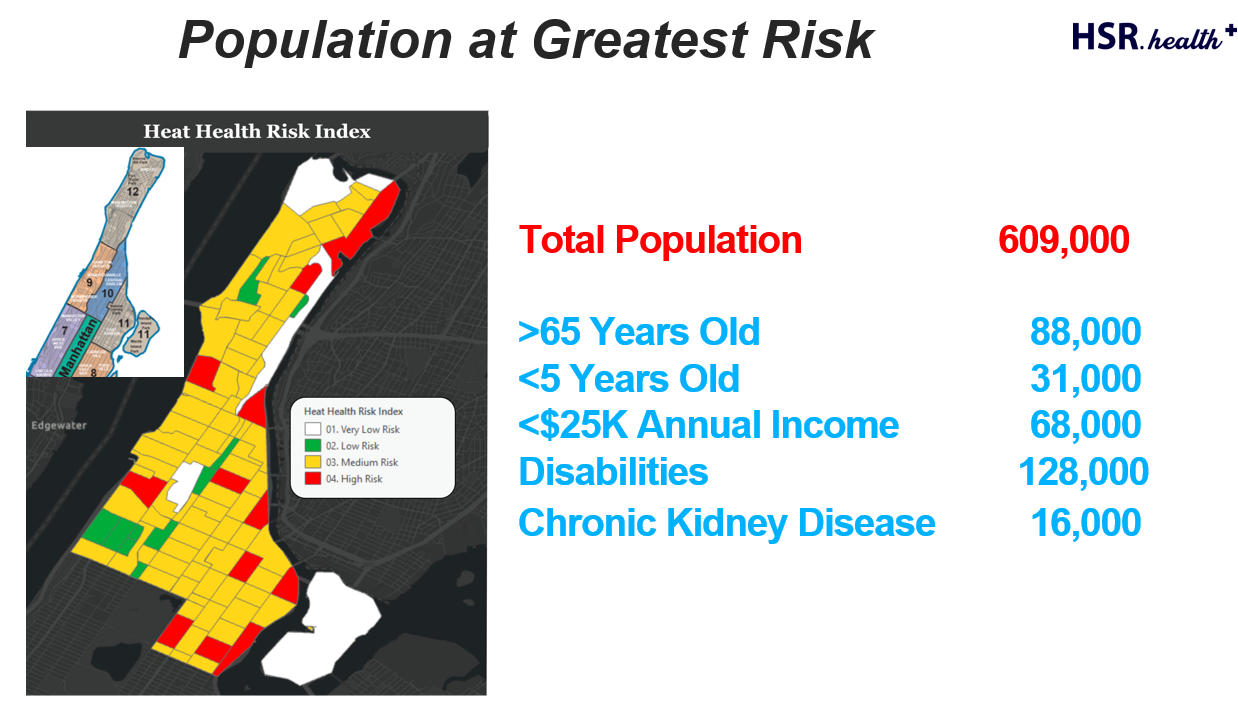Overview
A particular worrisome impact of climate change on human health and welfare will be its effect on the creation of deadly heat waves (Bojunda 2021). Heat waves are increasing in
frequency and intensity, the potential effects of which can include increases in heat stroke and related conditions, cardiovascular disease, respiratory disease, amongst others.
Extreme heat has difference affects across age groups, races, social determinants, pre-existing health conditions, and overall health profiles, leading to more vulnerable populations
(Stone et al., 2010).
The Extreme Heat Health Risk Index identifies in advance the health and medical needs of the impacted population.

Urban Extreme Heat Health Risk Index
The Urban Heat Health Risk Index takes into account the additional heat exposure of those living in tall buildings. The Index is demonstrated for a portion of Northern Manhattan in New York City, USA, with funded from the U.S. Department of Homeland Security, the U.S. National Geospatial-Intelligence Agency, and the U.S. National Oceanic & Atmospheric Administration. Additional information about this indicator and the underlying data can be found in our whitepaper.
Explore the Urban Extreme Heat Health Risk Index on the Open GeoMD Platform(Coming Soon!)
Benefits
Informs emergency response personnel, public health officials, governments, economic development, city/civic planners, and global public health organizations the information they need to:
- The identification in advance of the health and medical needs of the population impacted by an extreme heat event.
- Informing policy decisions for heat impacted areas.
- Provides emergency response managers and first responders the necessary decision support guidance to aid response, resource allocation, and evacuation efforts.
Data Availability
The dataset is available in multiple formats, partially including:
- CSV
- Web Map Service
- Web Feature Service
- Geo-JSON
- GeoParquet
- and other user-specified formats.